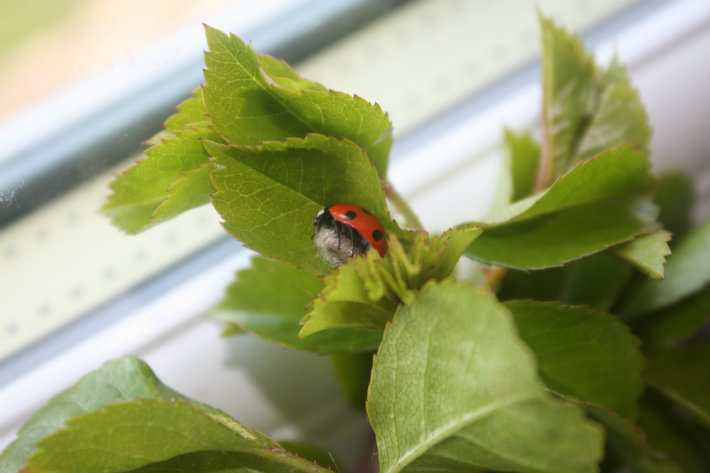
Scientists are calling on people who are out in their garden this summer to take part in The Ladybird Challenge and help discover how far an alien ladybird species in the UK is affecting other insects, including a wasp parasite.
Researchers from the University of Stirling are working in partnership with the Centre for Ecology and Hydrology and the UK Ladybird Survey to find out whether the natural balance between the seven-spot ladybird and the parasitic wasphas been disrupted by the arrival of another ladybird species in the UK - the harlequin ladybird.
PhD researcher Katie Murray from the University’s Faculty of Natural Sciences, said: “Harlequin ladybirds continue to cause large population declines for lots of native ladybirds, but we believe the impact is even more widespread. We need the public to help us find out whether the parasitic wasp has also been affected.
“We’re asking volunteers to help find seven-spot ladybirds in their gardens and parks and check if they have a wasp cocoon. Cocoons are easy to spot - they are nearly the same size as the ladybird and are found between its legs.”
Intrepid ladybird spotters are encouraged to count how many ladybirds they find and how many have cocoons. Records from these everyday eco-warriors will allow researchers to look at the occurrence of the wasp in the UK and whether it is less common in areas where harlequin ladybirds dominate.
Dr Matt Tinsley, senior lecturer at the University, added: “The wasp has an amazing lifecycle: it lays an egg in an adult ladybird, which hatches into a grub that eats the ladybird from the inside. The grub eventually squeezes out of the still-living ladybird and spins a cocoon between its legs. The ladybird is turned into a ‘zombie bodyguard’ protecting the cocoon from predators until the wasp emerges. Without the ladybird, the wasp would not be able to complete its lifecycle.”
Helen Roy, of the Centre for Ecology and Hydrology and coordinator of the UK Ladybird Survey, said: “People across the UK have been instrumental in tracking the spread of the harlequin ladybird and providing records of native ladybirds too.
“Through the inspiring contributions of citizen scientists we have hugely increased our understanding of the ecology of ladybirds in Britain. There is now a unique and exciting opportunity to monitor this intriguing parasite alongside the spread of the harlequin ladybird.”
Volunteers can send in their sightings at ladybirdchallenge.co.uk or follow the study on Twitter: @lbird_challenge.
Notes for editors
- Background information
- More information on the harlequin ladybird can be found on the UK Ladybird Survey website including an animated map showing the spread of the harlequin across the UK from 2003.
- The harlequin is an invasive non-native species in the UK. An alert system operates within the UK for invasive species and the latest species alerts can be found here. Sightings of harlequin ladybirds and other non-native species should be reported via the iRecord system.
- The Ladybird Challenge is funded by the NERC
